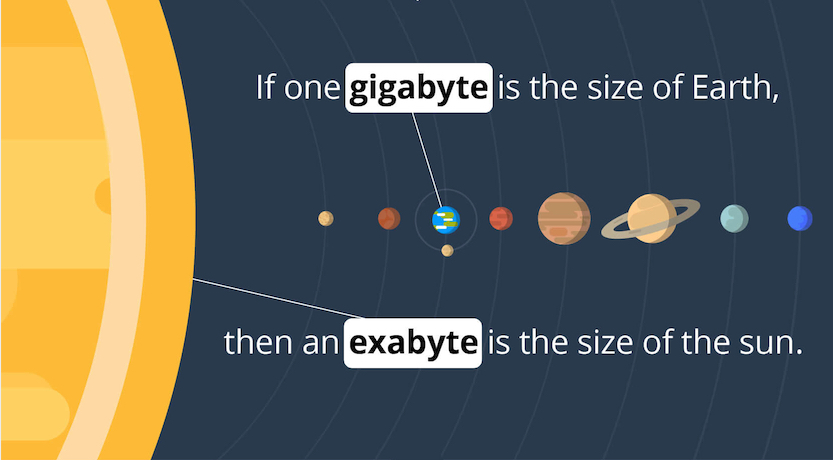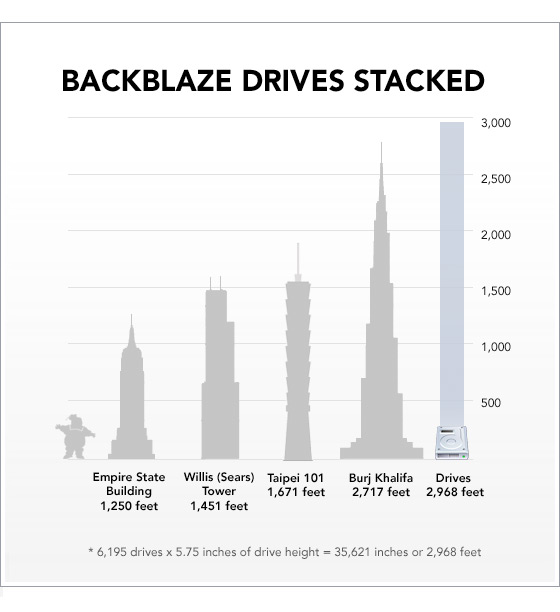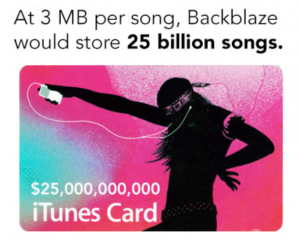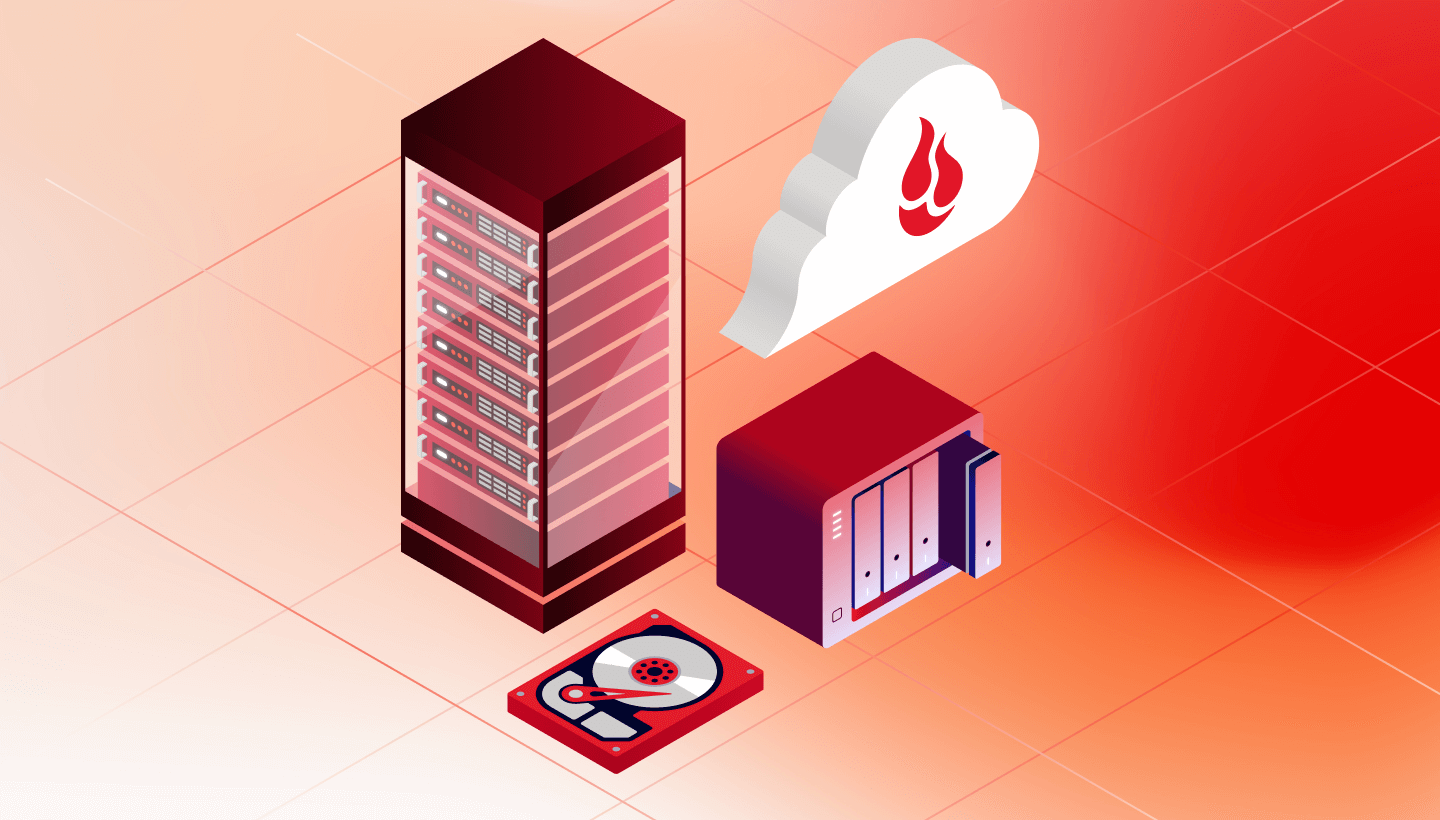
What is an Exabyte?
An exabyte is made up of bytes, which themselves are units of digital storage. A byte is made up of 8 bits. A bit—short for “binary digit”—is a single unit of data. Namely a 1, or a 0.
The International System of Units (SI) denotes “exa” as a multiplication by the sixth power of 1000 or (1018).
In other words, 1 exabyte (EB) = 1018bytes = 1,0006bytes = 1000000000000000000 bytes = 1,000 petabytes = 1 million terabytes = 1 billion gigabytes. Overwhelmed by numbers yet?
Why don’t we give you some examples of what these numbers actually look like? We created this infographic to help put it in perspective.

Share this Image On Your Site
Please include attribution to Backblaze.com with this graphic.
The Road to an Exabyte of Cloud Storage
So now that you know what an exabyte looks like, let’s look at how Backblaze got there.
Way back in 2010, we had 10 petabytes of customer data under management. It was a big deal for us, it took us two years to accomplish and, more importantly, it was a sign that thousands of customers trusted us with their data.
It meant a lot! But when we decided to tell the world about it, we had a hard time quantifying just how big 10 petabytes were, so naturally we made an infographic.

That’s a lot of hard drives. A Burj Khalifa of drives, in fact.
In what felt like the blink of an eye, it was two years later, and we had 75 petabytes of data. The Burj was out. And, because it was 2013, we quantified that amount of data like this…

Pop songs now average around 3:30 in length, which means if you tried to listen to this imaginary musical archive, it would take you 167,000 years. And sadly, the total number of recorded songs is only the tens to hundreds of millions, so you’d have some repeats.
That’s a lot of songs! But more importantly, our data under management had grown by 750%! But we could barely take time to enjoy it because five months later we hit 100 petabytes, and we had to call it out. Stacking up to the Burj Khalifa was in the past! Now, we rivaled Mt. Shasta…

But stacking drives was rapidly becoming less effective as a measurement. Simply put, the comparison was no longer apples to apples: the 3,000 drives we stacked up in 2010 only held one terabyte of data. If you were to take those same 3,000 drives and use the average drive size we had in 2013, about 4 terabytes of data per drive, the size of the stack would stay the same, as hard drives had not physically grown, but the density of the storage inside the drives had grown by 400%.
Regardless, the years went by, we launched an award-winning cloud storage service (Backblaze B2), and the incoming petabytes kept on accelerating—150 petabytes in early 2015, 200 before we reached 2016. Around there, we decided we needed to wait until the next big moment, and in February 2018, we hit 500 petabytes.
It took us two years to store 10 petabytes of data.
Over the next 7 years, by 2018, we stored another 500 petabytes.
And today, we reset the clock, because in the last two years, we’ve added another 500 petabytes. Which means we’re turning the clock back to 1…
1 exabyte.
Today, across 125,000 hard drives, Backblaze is managing an exabyte of customer data.
And what does that mean? Well, you should ask Ahin.




